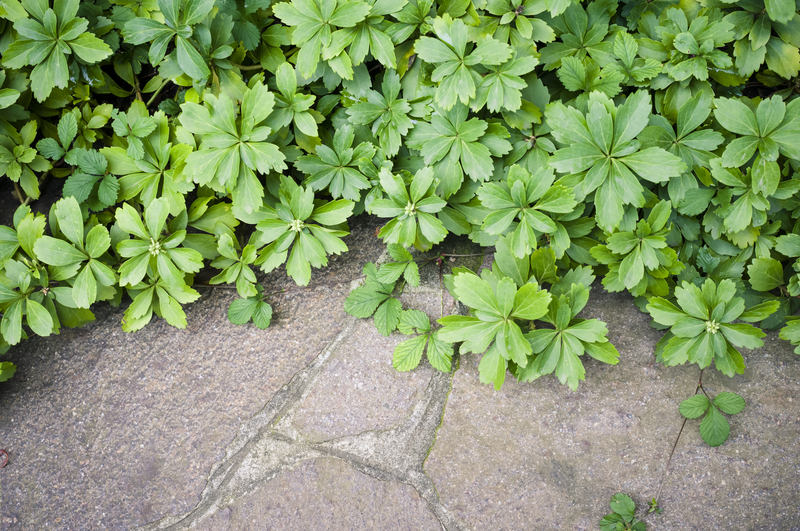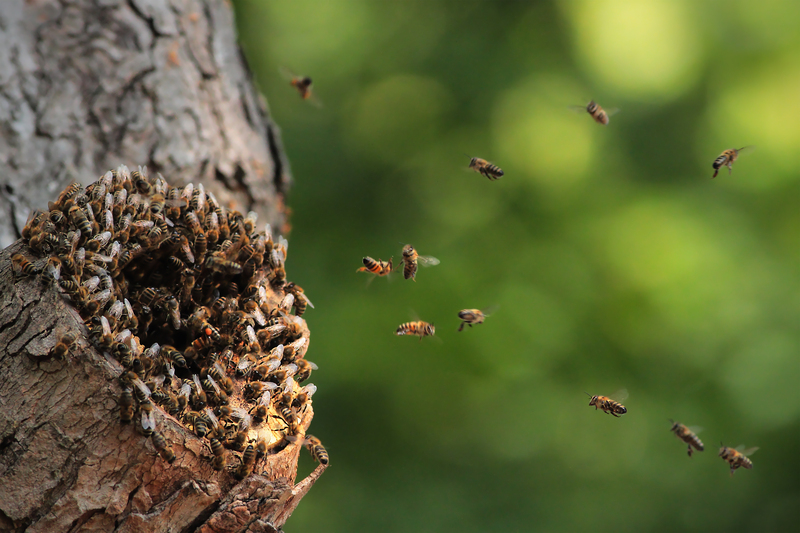Top Three Strategies to Achieve Effective Weed Control
Posted on 04/06/2025
Top Three Strategies to Achieve Effective Weed Control
Weeds are more than just a backyard nuisance; they rob your plants of vital nutrients, sunlight, and water. For gardeners, farmers, and landscapers alike, discovering efficient and reliable weed control methods is essential for thriving plant growth. This comprehensive article dives deep into the top three strategies that deliver effective weed management--with practical advice, evidence-based approaches, and tips tailored for both beginners and seasoned green thumbs. Stay with us as we explore the innovative and best practices for weed suppression that'll help you reclaim your outdoor spaces.

Understanding the Challenge of Weeds
Before jumping into solutions, it's important to understand why weeds pose such a persistent problem. Weeds can outcompete your desired plants, reduce crop yields, harbor pests and diseases, and make landscapes look untidy. Left unchecked, they can rapidly take over any patch of soil. Hence, adopting a systematic approach to weed control is crucial for sustainable and productive gardening or farming.
1. Cultural Control: Outcompete Weeds with Smart Gardening Practices
Why Cultural Weed Management Works
Cultural methods rely on optimizing your gardening habits to create an environment where weeds struggle to establish. This includes techniques that favor the growth of your crops or ornamentals while reducing opportunities for unwanted plants.
Key Cultural Weed Control Practices
- Crop Rotation: Regularly changing the type of crops you grow can break weed life cycles, limiting their ability to spread and establish dominance.
- Dense Planting: Spacing your plants closely together shades the ground, minimizing sunlight for weeds and suppressing their growth naturally.
- Cover Crops: Utilizing fast-growing cover crops (like clover or rye) during off-seasons keeps soil covered and chokes out emerging weeds.
- Mulching: Applying a thick layer of organic or synthetic mulch physically blocks weed seeds from getting the light they need to sprout and thrive.
- Soil Health Improvement: Healthy, well-structured soil supports robust crops that can naturally fend off weed competition through vigorous growth.
Tip: Always monitor for potential weed breakthroughs, especially after harvesting a crop or disturbing the soil.
Benefits of Cultural Weed Control
- Eco-friendly: Reduces reliance on chemicals or heavy machinery.
- Promotes soil health: Encourages biodiversity and natural resilience.
- Long-term sustainability: Helps establish a natural balance, making future weed control more manageable.
2. Mechanical & Physical Weed Control: Hands-On Approaches for Immediate Impact
Mechanized and Manual Techniques Explained
Mechanical weed control involves physically removing or destroying weeds using tools, equipment, or manual labor. This tactic offers fast results and can be particularly effective when dealing with established or persistent weeds.
Popular Mechanical Weed Control Techniques
- Hand Weeding: Pulling weeds by hand is labor-intensive but highly effective for targeting small patches and avoiding damage to desired plants.
- Hoeing and Cultivation: Stirring the soil with a hoe or cultivator cuts weeds off at the soil line, preventing regrowth and exposing roots to desiccation.
- Mowing: Regular mowing prevents weed seeds from maturing and spreading, especially in lawns and meadows.
- Flame Weeding: For non-flammable areas, controlled application of propane torches can scorch weeds, particularly between planting rows or in paths.
- Solarization: Laying clear plastic sheets over moist soil during hot months bakes weeds and their seeds, providing an effective pre-planting weed knockdown.
Note: Mechanical weed control is best suited for smaller areas or as an adjunct to other weed management strategies in larger plots.
Advantages of Mechanical Weed Control
- Immediate Results: See visible effects right after application.
- Reduces seed bank: By removing mature weeds, you prevent further seed dispersal.
- Selective: Target specific problem areas without disturbing the rest of your garden.
- Minimal chemical use: No risk of chemical drift or residue.
3. Chemical Weed Control: Using Herbicides Effectively & Responsibly
Understanding Chemical Weed Management
Chemical methods--using herbicides--can be powerful tools in the arsenal for effective weed control, especially in challenging situations or on larger properties. However, they require knowledge, care, and a commitment to using products safely and in accordance with all guidelines.
Types of Herbicides and Their Uses
- Pre-emergent Herbicides: These stop weed seeds from germinating. Best used in spring or fall, timed before weed outbreaks.
- Post-emergent Herbicides: Applied to actively growing weeds. Different formulations target broadleaf weeds, grasses, or both.
- Selective Herbicides: Target specific types of weeds, allowing you to kill weeds in lawns or crops without damaging your desired plants.
- Non-selective Herbicides: Kill most plant life and are best for clearing driveways, paths, or starting new planting beds.
Best Practices for Safe and Effective Herbicide Use
- Read and follow all label instructions to the letter.
- Apply on calm, dry days to prevent spray drift.
- Avoid overuse; too much can harm desirable plants and pollute water sources.
- Use personal protective equipment (PPE) such as gloves, goggles, and masks.
- Rotate between different herbicide types to prevent weeds from developing resistance.
Responsible chemical weed control should always complement--not replace--good cultural and mechanical weed management.
Pros and Cons of Chemical Weed Control
- Pros: Highly effective, scalable to large areas, offers both preventative and curative options.
- Cons: Potential environmental risks, may harm non-target plants and wildlife, possible development of herbicide-resistant weeds.
Combining Strategies for the Best Weed Management
The most effective weed control programs use an integrated approach. Relying solely on one technique makes weeds more likely to adapt or persist. Instead, blend the three main strategies for robust, long-lasting results.
Integrated Weed Management (IWM) Best Practices:
- Start with cultural prevention: Healthy, densely planted, and well-mulched gardens naturally resist weeds.
- Tackle outbreaks early: The sooner you catch new weed growth, the easier it is to eradicate.
- Spot treat tough weeds: Use mechanical removal or targeted herbicides only where persistent weeds remain.
- Monitor and adjust: Keep records of what works and refine your approach each season.
Additional Tips for Long-Lasting Weed Suppression
- Stay consistent: Regular attention prevents weeds from becoming overwhelming.
- Inspect boundaries and walkways: These are often the first places weeds establish.
- Choose high-quality mulch: Materials like bark chips or leaf mold are more durable and offer better weed suppression.
- Compost with care: Avoid adding weed-infested material to your compost pile unless you're hot-composting.
- Encourage soil coverage: Bare ground is an open invitation for weeds. Use plants or ground cover to fill empty spaces.
How to Identify Common Weeds in Your Area
Knowledge is your first line of defense in weed management. Learn to identify the most problematic weeds for your region and timing interventions for when they're most vulnerable. Local extension services, apps, or weed field guides are invaluable resources.

FAQs about Effective Weed Control
-
Is organic weed control possible?
Yes! Many cultural and mechanical strategies are organic and safe for pollinators, pets, and children. Mulching, crop rotation, hand pulling, and vinegar-based sprays are great options. -
What's the best time of year for weed control?
Early spring and late fall are crucial for tackling weeds before they flower or go dormant, but ongoing attention is necessary all season. -
Are landscape fabrics useful?
Landscape fabrics can offer short- to medium-term weed suppression under paths or mulch but may degrade over time or harbor weeds on top.
Conclusion: Mastering the Art of Weed Control
Achieving superior weed control is both a science and an art. By integrating cultural, mechanical, and chemical weed management techniques, you can protect your plants, boost yields, and maintain a beautiful outdoor space. Start by building strong preventive habits, address issues promptly using the right tools, and use chemicals responsibly only when absolutely necessary. With these three leading strategies, effective weed management becomes a sustainable reality for gardens, lawns, and farms of all sizes.
Remember: Consistency, knowledge, and adaptation are the keys to long-lasting weed suppression. Happy gardening!



